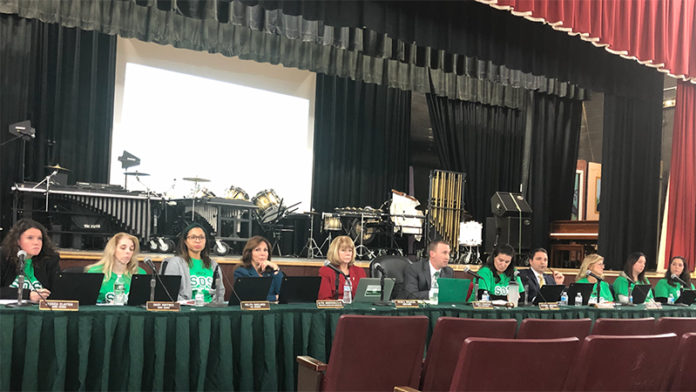
BRICK – Earlier this month, the school district was notified that its application for a request of emergency aid of $2.7 million was denied by the NJ Department of Education (DOE) for reasons school Business Administrator James Edwards called “beyond ridiculous.”
The first reason the application was denied was because Brick submitted a balanced budget, which is required by law in New Jersey.
“You can’t not submit a balanced budget, so they didn’t take into any consideration the cuts we had to make in 2020 to be able to submit a balanced budget,” he said during the December 12 Board of Education meeting.
Restoring those cuts were included in the application to support reasons why the $2.7 million was needed, he said.
The application was also denied because Brick is an efficient and low-spending school district, and is putting money towards fixing the schools, which are aging and need work.
“So we shouldn’t have done that,” Edwards said, “we should have just used it for the operations, even though our schools are aging, need help and need work.”
The business administrator said the district should appeal the denial for emergency aid, even though it lost last year’s appeal.
The Brick school district is joining other districts in filing a joint Open Public Records Request to the DOE to “once again, as we have done in the past, ask for details of the wealth calculation,” Edwards said.

He was referring to the funding formula the state uses to determine the distribution of state aid to all the schools in New Jersey.
Prior OPRA requests have been denied since the DOE says the wealth calculations contained within the funding formula are proprietary, which is “completely ridiculous,” Edwards said.
The 10th District Legislators have sponsored a bill, A-6029 that would require the DOE to share the wealth calculations that has determined Brick is a very wealthy school district, and not entitled to the amount of money it is currently receiving, Edwards said.
Moving forward, revenue strategies include the possibility of hiring a firm that can assist with grant writing and with different types of fundraiser events.
“We’re really trying to figure out, as we lose a larger and larger amount of revenue – each year is going to get harder and harder,” he said. “We need to determine different ways that we can supplement those with other sources of revenue besides a tax levy.”
For the 2020-2021 school year budget the district is projected to lose $4.2 million in state aid. The Senate bill that takes away the aid, S-2, mandates that the district raise school taxes 2 percent, which would raise some $2.2 million, leaving a revenue hole of about $2 million, Edwards said.
“And that revenue hole, of course, would just keep us even with where we are now, and not take into consideration inflationary costs,” he added.
In a bill being proposed by NJ Senate President Stephen Sweeney, districts that are considered to be “below adequacy,” like Brick, would allow the township to raise additional revenue above the 2 percent tax levy cap.
The allowable increase would be up to the amount the district is losing in state aid, but no more than the amount the district is below adequacy. The bill appears to be on a fast track, Edwards added.
Adequacy is defined as the amount of money required to provide a thorough and efficient education. In Brick, that amount is $22 million over five years, he said.
To make up for the $22 million loss, Brick taxpayers would have to ante up an additional $603 a year for a home assessed at $295,100, or an 18.97 percent tax increase.
“I can’t say that I believe that’s the answer,” Edwards said.
“And that wouldn’t get us ahead, it would just keep us to where we are today, and wouldn’t account for any type of inflationary costs, no rise in things like utilities and health benefits,” he said.
Last year in the first year of cuts, Brick lost $1.7 million. This year the loss was $2.2 million. For the 2020-21 school year, the district stands to lose $4.2 million. In 2021-2022, the loss will be $5.2 million. And the losses will continue for three years after that, Edwards said.
“This is going to not just change Brick schools, but change Brick as a community,” Edwards said. “The community you know today won’t be the same because the schools won’t be the same.”






